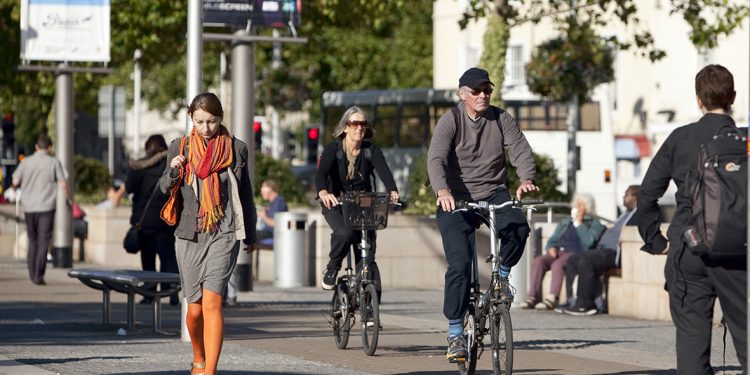Piyush Ranjan Rout
Cities today are developing less as automobile-centric ones, although vehicles continue to dominate the cityscape. Most cities big or small today are in the process of creating infrastructure and policies that encourage cycling and walking. Even cities similar to Indian metropolises of the present are beginning to look more at mass transit-based, walkable spaces.
Barcelona is turning automobile-oriented streets into walkabale, mixed land use public spaces. Hamburg, in turn, plans to turn 40 per cent of its land into concretised car-free green spaces. New York City, in turn, has turned its street space into seating under an urban transformation agenda that includes pedestrianising Times Square. In other words, every other city today is reinventing itself with more space for cycling and walking. Organising cities around people, not just cars, is commercially and economically constructive, along with benefits to health, communities and environment, there is a solid case to reinvent cities around walking and cycling.
Such neighbourhoods gave residents of Melbourne the ability to ‘live locally’, as most of their everyday needs were just 20 minutes away from home
In 2018, Plan Melbourne came up with the idea of 20-minute neighbourhoods; it meant residents could fulfil most of their daily needs by walking distances that were a 20-minute walk, cycling or public transport trip from home at most. Such neighbourhoods gave residents of Melbourne the ability to ‘live locally’, as most of their everyday needs were just 20 minutes away from home. Everyday needs included schools, shops, meeting places, open spaces, cafes, doctors, childcare and access to public transport. This was one central concept of Plan Melbourne, the state government’s key planning strategy.
Cities that prioritise walking, bicycling or public transport encourage people to interact and help communities thrive with more outdoors time, which improves well-being and reduces the number of cars on the street leaving fresher air to breathe. The 20-minute neighbourhood concept is all about creating walkable, healthy, cohesive and sustainable communities with strong local economies, while reducing the need to travel and cutting greenhouse gas emissions.
Cities these days want locals to spend less time on roads commuting and more on families, hobbies and friends. Most cities are reworking urban plans by offering communities so much that everything they need could be available right at their doorsteps. Cities often do not realise how important cycling and walking are in a neighbourhood because traders usually under-estimate the proportion such people visiting shops.
A 20-minute neighbourhood must also be safe, accessible and well-connected for pedestrians and cyclists to optimise active transport; it should offer high-quality public and open spaces; provide services and destinations that support local living; facilitate access to quality public transport that connects people to jobs and higher-order services; deliver housing at densities that make local services and transport viable; and facilitate thriving local economies.
Cities such as Bhubaneswar must understand the benefits and opportunities of cycling and walking and find practical ways to make it easier for people to walk or cycle safely throughout temple city. Cities where neighbourhoods are better equipped with walking and cycling spaces have seen increases in retail and housing rents be it in Bogota in Colombia or Utrecht in the Netherlands or Barcelona in Spain or Seoul in South Korea.
Urban planning is key if Bhubaneswar wants to transform its neighbourhoods into twenty-minute ones. Streets need crosswalks and pedestrian lights; neighbourhoods should be packed with amenities such as shops, schools and entertainment; public parks must compensate for smaller residential blocks. In reality, 20-minute neighbourhoods in Bhubaneswar have existed since 1948 when Otto Königsberger planned the city. But the plan has not trickled down as the city expanded.
Although the city could not lay grounding for such neighbourhoods in the past, it does not mean the scenario cannot be changed today. Bhubaneswar now needs to improve urban planning with connectivity, density and destinations, underpinned by good walking and cycling environments that are safe and appealing.
The twenty-minute neighbourhoods of Melbourne can be an inspiration for Bhubaneswar, which is still a medium city where improvements are possible.
The writer is an urban management practitioner. He can be reached on Twitter @piyushrout.







































